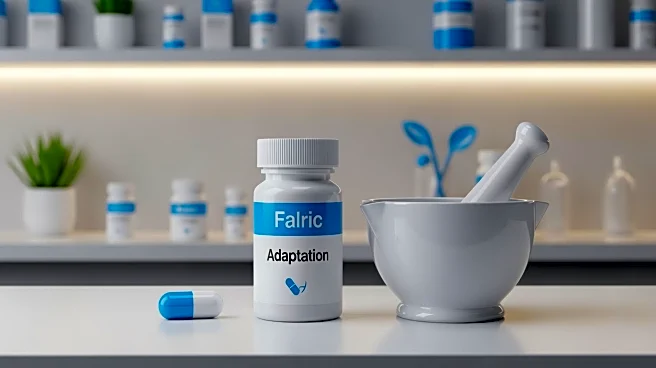What's Happening?
Pharmaceutical companies are adapting their marketing strategies in response to the growing role of community pharmacies in primary care. With initiatives like the Pharmacy First scheme, pharmacists are increasingly
involved in treating minor conditions and advising on medications, which traditionally fell under the purview of general practitioners. This shift is part of a broader effort to alleviate GP workloads and improve healthcare access. As pharmacists become key influencers in treatment decisions, pharma companies are re-evaluating their marketing approaches to target pharmacists directly, rather than focusing solely on GPs and specialists. This includes creating tailored educational materials and integrating pharmacy-specific touchpoints in marketing campaigns.
Why It's Important?
The evolving role of pharmacists presents both challenges and opportunities for pharmaceutical companies. As pharmacists gain influence in patient treatment decisions, pharma marketers must adapt their strategies to effectively engage this new audience. This shift could lead to increased brand visibility and consumer trust, as pharmacists are seen as accessible and reliable sources of healthcare advice. Companies that successfully navigate this transition stand to gain a competitive advantage by aligning their marketing efforts with the changing dynamics of healthcare delivery. However, failure to recognize the growing importance of pharmacists could result in missed opportunities and diminished influence in the patient journey.
What's Next?
Pharmaceutical companies are expected to continue refining their marketing strategies to better engage pharmacists. This includes developing omnichannel approaches that combine face-to-face interactions with digital platforms, allowing pharmacists to access relevant information efficiently. As the role of pharmacists expands, companies may also invest in creating bespoke content that reflects pharmacists' clinical responsibilities and time constraints. Additionally, the rise of P-medicine self-selection, where patients choose pharmacy medicines with pharmacist guidance, could further influence marketing strategies, emphasizing brand visibility and consumer marketing.
Beyond the Headlines
The shift towards community pharmacies as primary care providers may have broader implications for healthcare policy and patient behavior. As pharmacists take on more clinical responsibilities, there could be increased pressure on healthcare systems to support their expanded role. This may lead to changes in regulatory frameworks and professional training programs to ensure pharmacists are equipped to handle their new responsibilities. Furthermore, the growing reliance on pharmacies for healthcare advice could alter patient expectations and behaviors, potentially leading to greater demand for accessible and convenient healthcare solutions.











